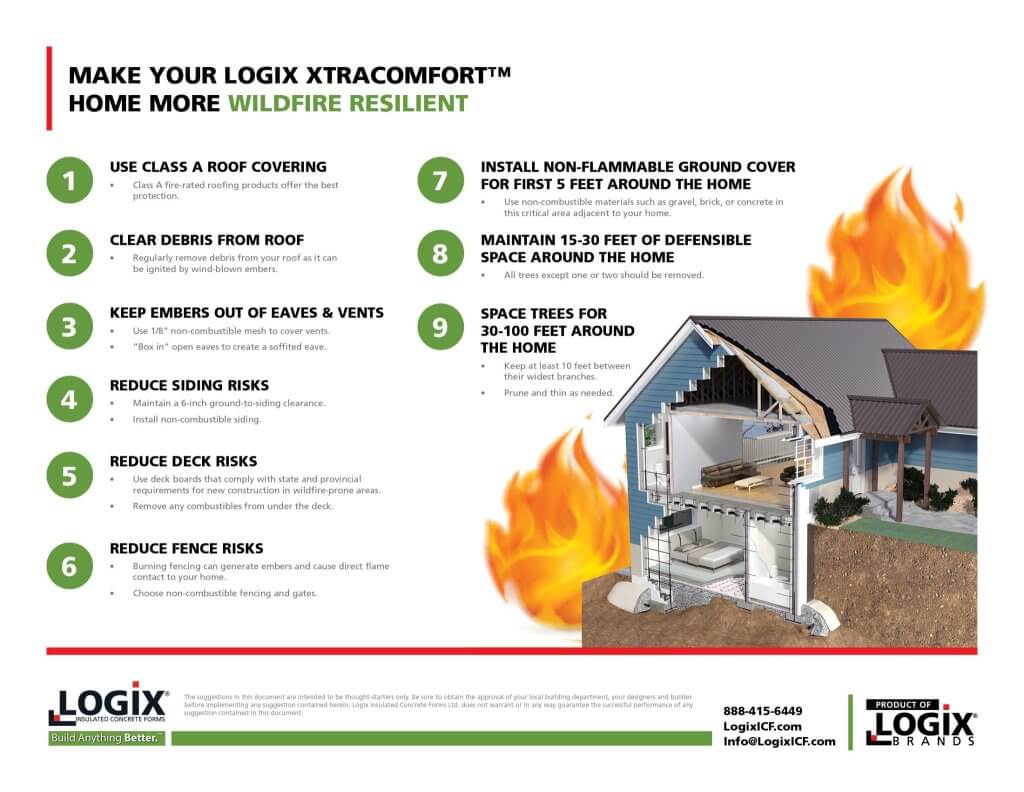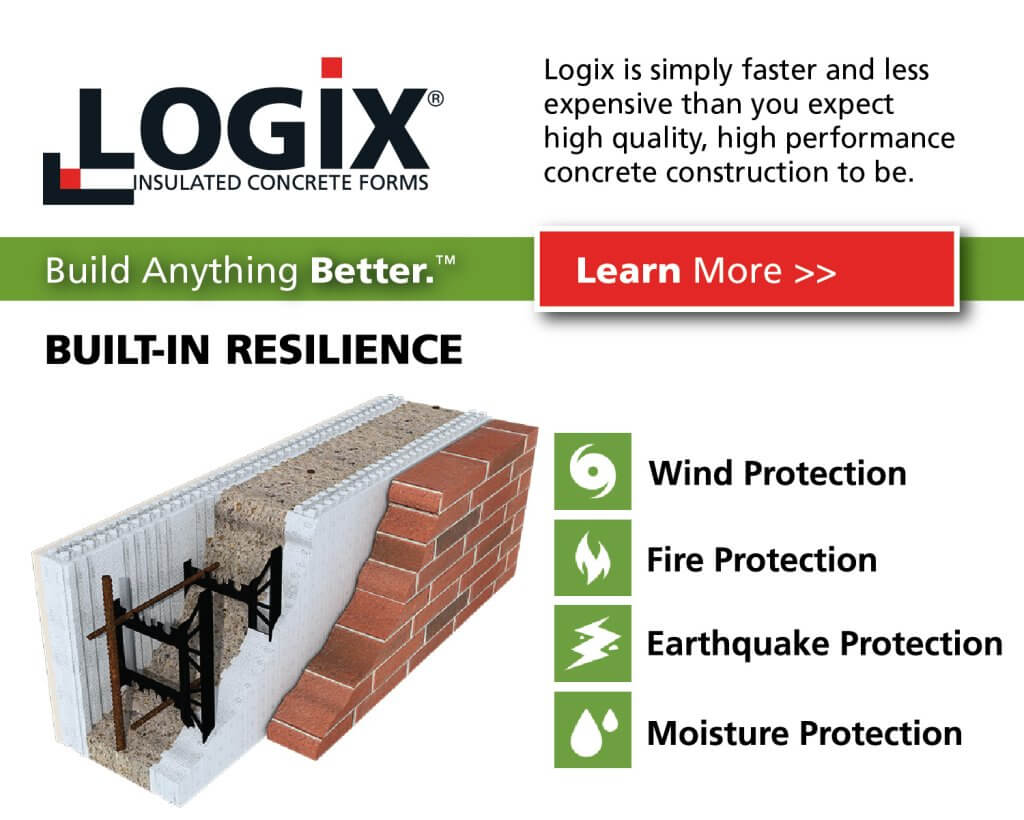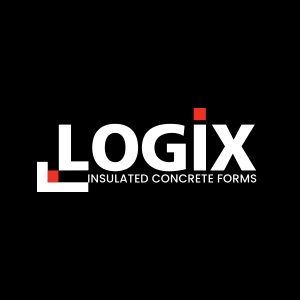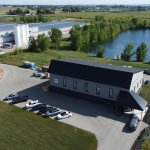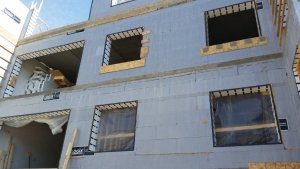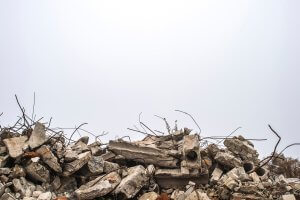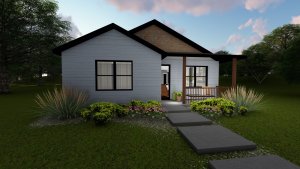Wildfire seasons are getting longer and more intense across North America, leaving owners and builders alike to ponder what can be done to protect homes.
Luckily, recent years have seen plenty of research into fire-resistant construction, with some outstanding results. In this post, we will walk you through 2 essential strategies for designing and building homes in areas prone to wildfire.
Wildfire Safe Design Strategies
There are 2 key strategies for designing fire-resistant buildings in the Wildland-Urban Interface (WUI).
First is creating a defensible space — a buffer zone around the building through which the flames will not be able to spread easily. Second is hardening the home, which means making the building resistant to ignition when exposed to flames or embers, by using suitable envelope materials and mechanical systems.
Creating a Defensible Space
Creating a Defensible Space around a home means designing the landscape in such a way that there are no flammable materials between the property line and the building.
Defensible space is typically separated into 2 zones.
Defensible Space — Zone 1
The first zone extends 30 feet from the building, including any accessory structures, and serves as the final barrier between flames and the building.
In this zone, you shouldn’t have any sources of fuel, such as stockpiles of wood or flammable plants. There are plenty of ignition-resistant vegetation species, which can be used together with hard landscaping features to create an aesthetically pleasing defensible space. The best plants are typically those that are native to the region, which is hardly surprising since they find a way to thrive despite an annual wildfire season.
You should also separate any vegetation in this zone from the building. Finally, it’s important to maintain Zone 1 — all dead vegetation should be cleared out regularly here.
Defensible Space — Zone 2
This second zone extends from the outer edge of Zone 1 to the property line. The function of Zone 2 is to slow the approaching flames. In this area, you’ll want to create both a vertical and a horizontal separation between trees and shrubs and ensure sufficient clearance (at 10 feet) around fuel sources, such as wood piles or LPG tanks.
New Zone Coming to California in 2023
In California, there’s a new, ember-resistant zone — Zone 0 — that will be mandatory in select WUI regions as of 2023. In this zone, which will extend 5 feet from the dwelling, only low-growing plants and non-combustible hard landscaping features will be allowed.
Hardening the Home
An effective defensible space can slow or even stop encroaching wildfire flames, but it may not be enough to protect the dwelling from wind-blown embers. These embers can find their way into the home’s many crevices, slide under doors, start fires in gutters and on top of the roof.
Protecting the residence from wind-blown embers, and any flames that make it past the defensible space comes down to 2 strategies. First — using the right envelope and structural materials, ones that would not ignite easily when exposed to fire. Second — eliminating openings through which embers can slide and sneak their way inside the home.
Why ICFs Are the Ideal Structural Material in the WUI
ICFs are the ideal building material in the WUI because they are not flammable.
Conventionally built, light-wood frame homes have a major failing — their entire structure is constructed with lumber, which is a flammable material.
Simply put, wood-frame homes themselves are fuel. Should the tiniest of embers find its way inside a wall cavity, it may not be long before a fire starts and spreads beyond control.
On the other hand, ICFs not only fail to ignite, they still retain their structural integrity after being subjected to intense heat — something the home may experience with wildfires burning nearby.
A recent study found that an ICF wall survived 4 hours in the oven and then withstood loads of up to 12,000 pounds per lineal foot without any deflection. It’s no surprise that in the wake of recent California wildfires, Logix ICF homes were the only ones left standing on their block, while their wood-framed counterparts, sadly, burned down.
- Use Class A roofing — Class A products provide the most effective protection.
- Keep embers out of vents — Cover vents with a non-combustible mesh.
- Protect the siding — Ensure a 6-inch separation between siding and grade.
- Protect the deck — Use only decking materials that are approved for construction in your wildfire prone region.
- Opt for a non-flammable fence — Non-combustible fencing and gates reduce the risk of embers being spread around during a wildfire.
Wrapping It Up
Wildfires are an ever-present danger across swathes of North America, but modern technology makes it possible to build fire-resistant homes.
The two vital strategies for designing fire-resistant homes are creating a defensible space and hardening the home’s envelope against ignition.
Crucially, you’ll want to make sure that the home’s structure is also able to resist ignition and high temperatures for a long time — something ICF walls are proven to do.
Logix Project Profile: Cabela’s North Edmonton
This massive 26,500 square foot commercial building project featuring 30 foot tall walls and
